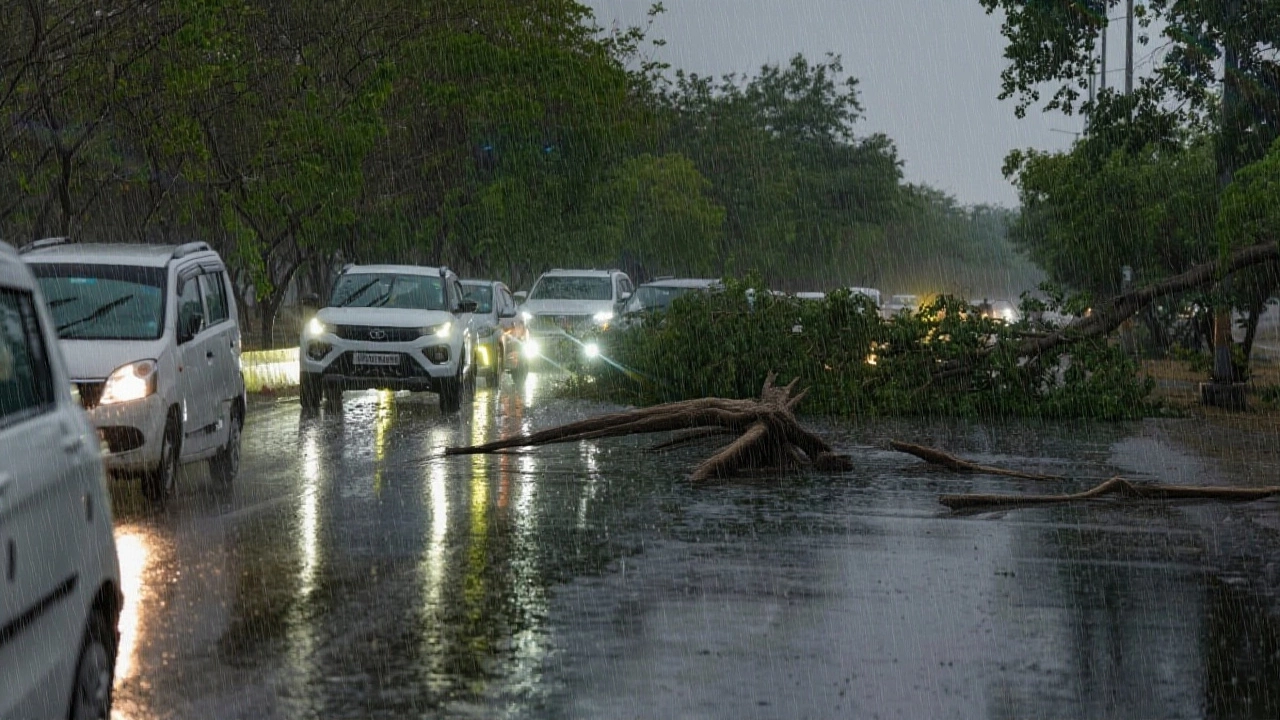Delhi Dust Storm: Quick Guide to Stay Safe
Ever stepped outside Delhi and felt the air turn gritty, like you were in a desert? That’s a dust storm, and it can catch you off guard. In this guide we’ll break down why these storms happen, what they mean for your health, and how to protect yourself without freaking out.
Why dust storms hit Delhi
Delhi sits in a plain surrounded by arid regions, so when strong winds pick up dry soil, it turns into a cloud of dust that rolls into the city. Seasonal changes, construction dust, and low‑level wind gusts add fuel to the fire. When humidity dips and the sun bakes the ground, even a modest breeze can lift millions of particles into the sky.
The result is a sudden drop in visibility and a spike in airborne particles. Air quality monitors flash red, and you might notice a sour taste in your mouth. It’s not just a nuisance—those fine particles can irritate your lungs and make breathing harder, especially for kids, seniors, and anyone with asthma.
How to stay safe during a dust storm
First thing: stay indoors if you can. Close windows, doors, and any vents that let outdoor air in. If you live in a high‑rise building, keep the air conditioner on “recirculate” mode so the system filters inside air instead of pulling in dirty outside air.
If you must go outside, protect your lungs with a mask—preferably an N95 or similar. A simple cloth mask helps a bit, but it won't block the smallest particles. Wear sunglasses to keep dust out of your eyes, and consider a hat or scarf over your mouth if the wind is fierce.
Cars are especially vulnerable. Drive slowly, use headlights, and keep the windows up. Turn on the recirculate setting on your car’s AC to limit dust intake. If visibility drops below 100 meters, pull over safely and wait it out.
Health‑wise, stay hydrated and avoid heavy exercise until the air clears. People with asthma should keep inhalers handy and consider a short‑term boost of a bronchodilator if symptoms flare up. If you feel persistent coughing, wheezing, or chest tightness, seek medical advice promptly.
Keep an eye on real‑time weather alerts. Delhi’s meteorological department and popular apps send push notifications when a dust storm is inbound. Subscribe to those alerts, and check local air‑quality indexes (AQI) before stepping out.
Finally, think long term. Community clean‑up drives, proper waste management, and green cover can reduce the amount of loose soil that feeds dust storms. While you can’t control the weather, you can help make the environment less dusty for everyone.
Dust storms are a regular part of Delhi’s climate, but they don’t have to ruin your day. By staying informed, using simple protective gear, and following a few practical steps, you can breathe easier and keep your routine on track until the air clears again.
Delhi’s Dust Storm Relieves Heat, IMD Warns of Thunderstorms Through May 25
- World
- 0

